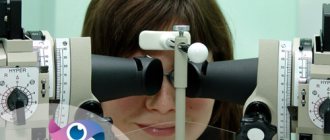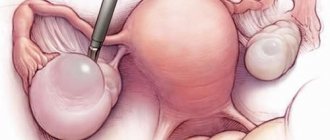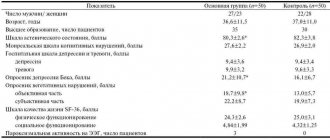Mildronate
Mildronate (international nonproprietary name - meldonium) is a very interesting drug, synthesized in the 70s of the last century by scientists of the Academy of Sciences of Latvia, which has firmly established itself on Russian pharmacy counters. It has a whole range of pharmacological effects: antianginal (directed against angina attacks), cardioprotective, antihypoxic (increasing resistance to oxygen starvation) and angioprotective (beneficially affecting the vascular wall and microcirculation). To be fair, it should be noted that mildronate has not yet earned recognition either in Europe or in the USA. However, its effectiveness was confirmed according to all the rules of evidence-based medicine in two double-blind randomized clinical trials conducted in Riga and Tomsk. And it is unlikely that mildronate would have managed to gain such popularity among domestic specialists, patients and even athletes if it had been a useless “dummy”.
Against the background of increased load, the drug balances the processes of oxygen delivery to cells and its consumption at the destination, prevents the accumulation of toxic breakdown products in cells, protecting them from damage, and has a tonic effect. Thanks to mildronate, the body is endowed with the ability to withstand increased stress and quickly restore its energy reserves. In this regard, mildronate is used in the treatment of various cardiovascular pathologies, cerebral circulatory disorders, and increasing mental and physical performance.
The vasodilating properties of mildronate are due to its ability to reduce the concentration of carnitine while increasing the synthesis of gamma-butyrobetaine. In acute ischemia of the heart muscle, the drug slows down the necrotic degeneration of myocytes and accelerates the rehabilitation process. In case of heart failure, mildronate helps the myocardium to contract better and withstand physical activity. In acute and chronic cerebral ischemia, the drug improves cerebral circulation and optimizes microcirculation in favor of the tissue area most affected by ischemia. In ophthalmology, mildronate is used in cases of vascular and dystrophic pathology of the fundus. Due to its ability to eliminate functional disorders of the central nervous system in persons suffering from alcoholism, the drug is effective in treating withdrawal symptoms.
The Latvian pharmaceutical industry has mastered the production of three dosage forms of mildronate: capsules, solution for intravenous and parabulbar (in the lower eyelid) administration, and syrup. Specific dosages of the drug depending on the disease and age of the patient can be found in the package inserts, although, given the prescription order for dispensing mildronate (including syrup), this is not necessary, because The last (and even the first) word in any case remains with the doctor.
How to restore strength after viral diseases?
Take your doctor's recommendations seriously
Follow all recommendations and instructions of your attending physician. If you are prescribed physical therapy or other procedures, do not skip sessions. Having coped with the disease, we want to be as far away from medical institutions as possible. But remember that your health depends on how diligently you follow the recommendations.
Eat foods rich in fiber
Fiber is food for our immunity. Feel free to include foods rich in fiber in your diet (white cabbage, avocado, raisins, dried apricots, white bread, beans, wheat bran).
Select the necessary vitamins or medications
After a viral disease, the body experiences a lack of vitamins. Find the right vitamins to fill these gaps, such as: Vitamin C helps strengthen the immune system, Vitamin D is good for bones and teeth, and Vitamin A improves vision.
You can also choose medications that will help restore and maintain performance. Such a drug could be “Mildronat® capsules 250 mg” - it will help you increase physical and mental performance, and also improve memory function.
Don't deny yourself the pleasures
Eat your favorite treat—don't worry about the calories. Go to a concert of your favorite artist or go on an interesting excursion - don’t waste your time. Be a little more kind to yourself - do not deny yourself pleasures, because they will have the most beneficial effect on your mood.
Say no to extra workloads
The rehabilitation period after a viral illness is a difficult period for you, both physically and psychologically. During this period, you should not adhere to a strict diet, engage in extreme sports, take on extra work, etc.
Love sports
We mentioned above that during rehabilitation you should avoid extreme sports, but nothing prevents you from starting to run in the morning, ride a bike or, say, sign up for a swimming pool. These and similar sports activities will help you keep your body in good shape and give you a lot of pleasant experiences.
Be surrounded by friends and loved ones
A well-known saying says: “Houses and walls heal.” And if at home you have not only your own walls, but also close people who are always ready to support you, then the recovery process becomes easy and painless. Friends and family sincerely love you and are ready to surround you with care and attention - and this is exactly what you need now.
Set yourself a new goal
Let a new interesting thing appear in your life to which you can devote time: start blogging, sign up for cooking courses, learn the basics of programming - the choice depends on your desires and preferences.
A new goal will help you make your life richer and more interesting, thanks to it the rehabilitation period will no longer seem like an unpleasant event.
If you are active, do not neglect the recommendations of your doctor, in a word, take on board the above tips, you will be able to quickly restore strength after a viral illness.
We wish you good health and self-confidence!
Material and methods
The open study included 119 patients with ischemic stroke (IS) and CCI (in Russian terminology DE), who received care during the period from February 1 to December 31, 2011. The age of the patients varied: with IS - from 29 to 82 years (average - 63.4 years), with DE - from 42 to 85 years (average - 57.7 years). The main vascular disease in the examined patients was hypertension. The duration of increased blood pressure in patients with IS was on average 12.7 years, in patients with DE - 11.9 years.
The patients were divided into two groups. Group 1 consisted of 32 patients with IS (15 men and 17 women). Group 2 consisted of 87 patients with DE (21 men and 66 women).
The criteria for inclusion of patients in the study were: for IS - the presence of a CT-verified stroke at the hospital stage and/or a stroke diagnosed by a neurologist upon discharge from the hospital; for DE – absence of severe cognitive impairment.
Exclusion criteria: for IS - patients staying in hospital for a short period (up to 7 days) and refusal of further treatment; transient ischemic attacks (TIA), the presence of space-occupying brain lesions confirmed by instrumental examination methods, encephalopathy; for DE - the presence of decompensated somatic pathology, severe dementia, Alzheimer's disease, Parkinson's disease, and mental disorders.
65 patients were diagnosed with DE without previous strokes and 22 patients with a history of IS. In case of CCI, the symptom complex was represented by both subjective and objective manifestations of the disease, when 2 or more characteristic symptoms were often repeated and/or existed for at least the last 3 months.
Written consent was obtained from each patient for examination and treatment.
To conduct the study, a protocol was developed that included obtaining information from the anamnesis about the patients’ complaints, objective symptoms, blood pressure (usual for the patient, “office” and after 15 minutes; measured twice using the Korotkoff method on the brachial artery, after which the values of SBP and DBP were recorded) , Heart rate (usual for the patient, during the initial examination and after 15 minutes). Additional examination methods included standard ECG, glucose monitoring (especially for diabetes mellitus), information on taking medications prescribed by the local doctor, subjective data on the condition of patients after treatment (patient complaints), clinical symptoms after treatment and a doctor’s report (indicating side effects , if any), diagnosis (including concomitant pathology). Data from patients in groups 1 and 2 were entered into an identical protocol and then included in the database of the AFIS computer program.
When analyzing the most important risk factors for stroke and DE, special attention was paid to hypertension, ischemic heart disease and diabetes mellitus (DM).
Mildronate was administered intravenously slowly at a dose of 1000 mg (10 ml of 10% solution), diluted in saline. If before the administration of mildronate during IS the SBP was above 200 mm Hg. and/or DBP above 110 mm Hg, and with DE - SBP above 180 mm Hg. and/or DBP above 100 mm Hg, antihypertensive drugs were used (after administration of mildronate). The patient with IS was monitored until he was transferred to the hospital neurologist.
To assess the safety of mildronate, in both groups 1 and 2, all undesirable effects were recorded based on patient complaints and targeted questioning.
All patients with DE (group 2) underwent outpatient treatment. In this case, repeated calls to patients were monitored within 10 days from the date of the initial examination (especially in the first 7 days).
Patients of group 1 (II) were hospitalized in city hospital No. 1. The examination of these patients was carried out at the hospital stage. It consisted of assessing subjective data, neurological deficit, blood pressure upon admission, verification of stroke using CT, ultrasound diagnostics of blood vessels in the brain and neck, determination of glucose and total cholesterol in the blood. The number of hospital days spent, the condition upon discharge from the hospital, the number of discharged patients, deaths, and the number of patients sent for follow-up treatment to an outpatient clinic were also taken into account.
In addition, an analysis of objective symptoms was carried out during the initial examination (by a doctor at an emergency medical service station) and upon admission to the hospital (by a neurologist) with an assessment of the neurological status (analysis of the quality of diagnosis by doctors at an emergency medical service station).
The results of treatment effectiveness were based on subjective data (headache, dizziness, noise in the head, poor memory, emotional lability) and assessment of neurological deficits (motor, vestibulo-cerebellar, sensory and speech disorders). The treatment effect was assessed by the doctor and the patient in both groups as: “improvement” and/or “no change”.
Statistical analysis was carried out using the protocol on the use of mildronate at the prehospital stage, the call card (form 110/y) and the medical history at the hospital stage (form 003/y).
Computer statistical processing of the results was carried out in the automated AFIS system.
Results and discussion
Pre-hospital stage
Since age is a significant non-correctable risk factor for the development of cardiovascular diseases in both men and women, let us consider the data obtained primarily in terms of this indicator (Fig. 2)
.
Figure 2. Number of emergency calls (along the x-axis) in different age groups.
In group 1, the largest number of patients belonged to the age groups 60-69 years (37.5%), 50-59 years and 70-79 years (21.9% each); in group 2, the largest number of patients were in the age groups 50-59 years (36.8%); 70-79 years old (23.0%); 60-69 years old (18.4%). Thus, it was revealed that in the vast majority of cases, AMI and CCI develop in elderly people. This was reflected in the number of EMS calls (Fig. 2)
.
As mentioned above, the main factors in the development of AMI and CCI are atherosclerosis and hypertension. In addition, the influence of ischemic heart disease, stroke, DE, diabetes and obesity may be noted.
Of the concomitant diseases in the anamnesis of the examined patients, the presence of hypertension, an independent and second most important (after age) risk factor for IS and DE, was revealed in 30 (93.8%) patients of the 1st group and 87 (100%) patients of the 2nd group . The duration of elevated blood pressure in patients of group 1 was on average 12.7 years, in patients of group 2 - 11.9 years. At the same time, in both patients with IS and DE, the combination of hypertension with other modifiable risk factors turned out to be common. It is known that the “crisis” course of hypertension is particularly dangerous, since fluctuations in blood pressure, both its increase and decrease, can cause hypoperfusion of the brain substance, which leads to circulatory disorders. A history of hypertensive crisis was noted in 4 (12.5%) patients in the 1st group, and in 14 (16.1%) patients in the 2nd group. A burdened hereditary and family history of these diseases was identified in 29 (90.1%) patients in the 1st group, and in 81 (93.1%) in the 2nd group.
The presented data confirm the importance of hypertension and other correctable risk factors on the formation of IS and DE.
In outpatient settings, patients should constantly receive adequate therapy focused on risk factors. This is reflected in our data on the frequency of treatment with different drugs (Table 2)
taking into account the implementation of the therapy regimen
(Table 3)
.
Thus, in an outpatient setting, some patients received drug therapy regularly, while others received it occasionally. The range of medicines was quite wide. In group 1, 23 (71.9%) patients were treated with medications. Among them, 12 (23.5%) took ACE inhibitors, more often enalapril (13.7%); diroton (5.9%); beta-blockers - 13 (25.5%), more often concor (23.5%); calcium channel blockers - 5 (9.8%); diuretics - 4 (7.8%) - indapamide; angiotensin receptor blockers (ARBs) - 7 (13.7%), more often lozap (11.8%). In group 2, 61 (70.1%) patients were treated with medications: ACE inhibitors - 44 (50.7%), most often monopril (17.5%), enalapril (9.2%), diroton (9.2% ); beta blockers - 13 (14.9%), more often atenolol (9.2%); diuretics - 13 (14.9%), more often hypothiazide (10.3); ARB - 6 (6.8%): lozap, lorista (3.4% each).
The total number of complaints made by patients before and after treatment in groups 1 and 2 differed slightly. In the 1st group it was 194, after therapy 124. In the 2nd - before treatment 936, after treatment 414. During examination, patients of the 1st group presented an average of 6-7 complaints, and patients of the 2nd group - by 10-11; after therapy, the number of complaints decreased to 3-4 and 4-5, respectively. The use of a scoring system that makes it possible to quantify the severity of complaints and thereby corresponding violations makes it possible to more objectively present the effectiveness of drug therapy in the conditions of emergency medical care (Fig. 3, 4)
.
Figure 3. Number of complaints in patients with AMI before and after therapy in emergency medical services.
Figure 4. Number of complaints in patients with CCI before and after therapy. As can be seen from the presented figures, most often patients in group 1 complained of headache (7.7%), nausea (8.2%), chills (8.2%), general weakness (11.9%), weakness in the arm and leg (7.2%), speech impairment (5.2%), numbness in the arm and leg (2.1%).
In group 2, subjective disorders were most often recorded in the form of headache (9.3%), non-systemic dizziness (9.3%), redness of the skin (8.2%), noise in the head (7.6%), decreased memory (6.9%), unsteady gait (4.5%), forgetfulness (2.4%). This suggests that the complaints of patients in group 1 are more related to neurological disorders, and the complaints of patients in group 2 are more specific for DE in general.
After treatment with mildronate in patients with IS, the number of somatovegetative complaints decreased - it decreased to 49.5%, and the number of specific complaints did not change - 14.5 and 13.5%, respectively; in patients with CCI, the number of subjective somatovegetative complaints decreased significantly (25.8%), while typical ones did not change (18.2%). A decrease in varying degrees of severity of the main subjective symptoms (headache, non-systemic dizziness, general weakness, noise in the head, etc.), assessed using a 4-point system, occurred in 100% of patients.
Currently, according to the literature, the risk of stroke in patients with blood pressure above 160/95 mmHg. increases approximately 4 times compared to persons with normal blood pressure, and with blood pressure more than 200/115 mm Hg. - 10 times. However, it should be remembered that an increase in blood pressure may be a stress response aimed at increasing cerebral blood flow in the area of cerebral ischemia, maintaining blood flow in ischemic areas of the brain. A low level of systemic blood pressure is also undesirable, leading, in conditions of impaired autoregulation of cerebral circulation, to cerebral hypoperfusion with the development of small cortical foci of infarction. The study allowed us to obtain our own data (Fig. 5 and 6)
, from which it follows that during therapy, the average SBP in the 1st group decreased by 9.5%, and in the 2nd group - by 6.2%, i.e.
administration of mildronate does not cause a sharp decrease in blood pressure. Figure 5. Average blood pressure and heart rate in AMI during different periods of the examination.
Figure 6. Average blood pressure and heart rate during CCI during different periods of the examination. It is known that heart rate affects life expectancy and an indicator of more than 80 beats/min requires correction. The state of the heart rhythm in the acute period of ischemic stroke and CCI was shown in Fig. 5 and 6
. The average heart rate was: in group 1 - 70.5 beats/min (from 60 to 80); “office” - 81.9 beats/min (from 56 to 120); 15 minutes after treatment - 78.2 beats/min (from 56 to 100). In the 2nd group - usual for the patient - 69.0 beats/min (from 62 to 80); “office” - 76.6 beats/min (from 48 to 110); 15 minutes after treatment - 74.4 beats/min (from 48 to 100). In group 1, tachycardia was registered before treatment in 9 (28.1%) patients; after treatment - it was absent, and in the 2nd group, before treatment it was in 14 (3.7%) patients, after treatment - in 2 (0.5%).
Thus, mildronate, used in the prehospital stage, does not have a pronounced effect on heart rate.
Let us dwell on the direct neurological consequences of the vascular diseases studied. It is known that the diagnosis of IS is based on the development of acute neurological disorders characteristic of cerebral vascular damage, taking into account risk factors. CCI is caused by slowly progressive diffuse damage to the brain as a result of decreased blood flow, which leads to pronounced changes in brain structures and various neurological disorders.
From those shown in Fig. 7 and 8
The data shows that in patients of group 1, symptoms of focal brain damage predominated: hemiparesis, hemiplegia - in 12 (13.7%) patients, dysarthria - in 14 (15.9%), tongue deviation - in 7 (8. 0%), hypoesthesia - in 6 (6.8%), lethargy - in 14 (15.9%).
Figure 7. Distribution of patients according to neurological symptoms in AMI.
Here and in Fig. 8-10: numbers reflect the number of patients. Figure 8. Distribution of patients according to neurological symptoms during CCI. In group 2, the clinical picture was characterized by a large polymorphism of neurological symptoms: hemiparesis - in 18 (4.7%) patients, dysarthria - in 8 (2.1%), agitation - in 32 (8.4%), chills, muscle pain. trembling - in 77 (18.8%), cognitive impairment - in 87 (22.5%). After therapy in group 1, the frequency of corresponding clinical symptoms decreased by 27.2%, smoothness of the nasolabial triangle - to 4.5%, dysarthria - to 4.5%, lethargy - to 3.4%, finger-nose test - to 2. 3%; in group 2, the decrease in clinical manifestations was 57.5%. At the same time, somatovegetative symptoms decreased by 47%, but the neurological deficit practically (consequences of IS) remained unchanged - 10.5%. In IS and CCI, there is a connection between the severity of neurological deficit and the age of the patients: in group 1 it was more pronounced in people over 60 years of age, and in group 2 - in people over 50 years of age.
Thus, during treatment with mildronate, there was a positive dynamics of the neurological condition in both groups 1 and 2. It should be emphasized that we are talking about a decrease in the severity of mainly somatovegetative manifestations, while focal neurological symptoms remained unchanged.
After the administration of mildronate, 15-20 minutes later, the doctor and the patient assessed its effect, and when transporting patients with IS to the hospital, before examination by a neurologist. In the 1st group, patients in 19 (59.4%) cases, and the doctor - in 13 (40.6%), in the 2nd group - in 80 (92.0%) and in 68 (78.2%) %) cases respectively. The proportion of assessment “no changes” in the 1st group was noted by patients in 13 (40.6%) cases, by the doctor - in 19 (59.4%), in the 2nd group - patients noted in 7 (8.0% ) cases, the doctor - in 19 (21.8%).
According to ECG data, in group 1, sinus rhythm was detected in 32 (100%) patients, sinus tachycardia - in 9 (28.1%), ventricular extrasystole - in 2 (6.3%), atrial extrasystole - in 2 (6.3%); in group 2, sinus rhythm was detected in 81 (93.1%) patients, sinus tachycardia - in 8 (9.2%), sinus bradycardia - in 2 (2.3%); atrial fibrillation - in 6 (6.9%). Left ventricular hypertrophy associated with ventricular rhythm disturbances was registered in group 1 - in 23 (71.9%) patients, in group 2 - in 66 (75.9%). The average glucose level in group 1 was 6.9 mmol/l, in group 2 - 6.6 mmol/l. Blood glucose levels exceeding 6 mmol/l were recorded in 7 (21.9%) patients in group 1, and in 18 (20.7%) patients in group 2.
During prehospital treatment, the main drug used for emergency medical treatment in both groups 1 and 2 was mildronate. A favorable profile of its efficacy and safety was established at a dose of 1000 mg in both groups. There were no significant adverse events or deterioration in the general somatic condition of the examined patients. The number of patients with side effects in the study groups was the same: in group 1 - 4 (12.4%) patients, in group 2 - 14 (12.6%). During the administration of the drug, patients complained: in the 1st group - dizziness - 3 (9.3%) patients, general weakness - 1 (3.1%), in the 2nd group - headache - 3 (3). .4%) of the patient, for dizziness - 4 (4.6%), for general weakness - 4 (4.6%). The listed complaints were short-term, since the corresponding disorders disappeared 1-3 minutes after the administration of mildronate, they did not require additional treatment and were not life-threatening.
Additional therapy was prescribed by doctors at the emergency medical service station to 25 (78.1%) patients in group 1, and to all (100%) patients in group 2. In this case, we are talking about antihypertensive therapy with the use of ebrantil (16% of patients), ENAP-R (4.0%), sublingual captopril (8.0%), magnesium sulfate (40.0%) in group 1 . In group 2, the following were used to reduce blood pressure: ebrantil (4.7%), ENAP-R (3.1%), captopril under the tongue (9.4%), magnesium sulfate (42.2%). In groups 1 and 2, glycine was also prescribed in 32.0 and 40.6% of cases, respectively.
Experience in prehospital treatment by EMS station specialists shows that the most important thing is to focus on stabilizing blood pressure. In this case, correction of blood pressure levels should be extremely careful, and nonspecific neuroprotective therapy should be started as early as possible (impact on the early stages of the ischemic cascade).









